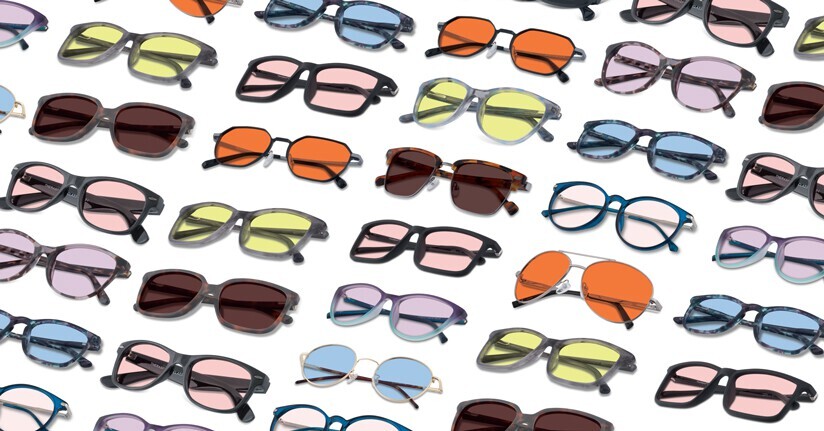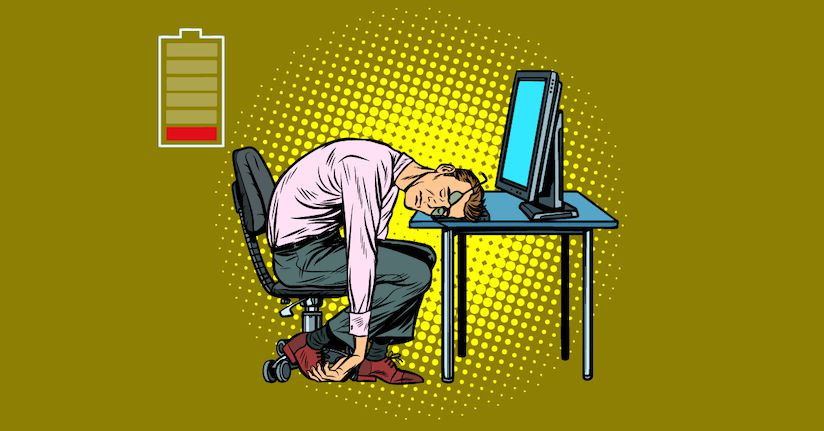Does Light Make You Tired? Fatigue and Light Sensitivity
Those with conditions that lead to intense exhaustion and widespread pain, such as chronic fatigue syndrome (CFS) or fibromyalgia, often experience a variety of other physical symptoms—particularly those that are visual or neurologic in origin. One of the more prominent issues is light sensitivity or photophobia, which stems from a strong intolerance or aversion to light.
In addition to being a regular side effect, light is also known to be a trigger for fatigue, exhaustion and tiredness for many patients, even those without a known disorder. In this post, we explore the ways that light can make us feel fatigued.
Chronic Syndromes that Cause Fatigue and Light Sensitivity
Certain medical conditions can lead to symptoms of both fatigue and light sensitivity, although their connection to one another is not well understood. Some of the more prominent disorders include:
- Chronic Fatigue Syndrome / Myalgic Encephalomyelitis (CFS/ME)
- Fibromyalgia
- Post-Concussion Syndrome, Traumatic Brain Injury
- Primary Sjogren's Syndrome
- Migraine and Headache Disorders
We take a closer look at how light and light sensitivity affects each of these conditions.
Chronic Fatigue Syndrome / Myalgic Encephalomyelitis (CFS/ME)
The name probably gives it away, but chronic fatigue syndrome / myalgic encephalomyelitis (CFS/ME) is characterized by debilitating fatigue and tiredness. But patients also know that it affects other parts of the body, including sleep, memory and vestibular systems. In addition, the eyes and brain are negatively impacted.
In fact, one study showed that patients report sensitivity to bright lighting as the top vision-related symptom associated with CFS/ME. Difficulty focusing as well as eye pain were also frequent, and light may play a role in the onset of those physical symptoms as well.1 Interestingly, there is evidence that patients with this long-term disorder also tend to face less-intense light exposure compared with the general population—perhaps further indicating signs of photophobia by a conscious choice to spend more time indoors.2 This all ties into their sleeping patterns too, which can ultimately make fatigue symptoms worse.
Although the exact reasons remain unknown for why photophobic and light-sensitive reactions occur with fatigue-centric disorders, some have termed it generalized hypervigilance. This means people are constantly on alert from and internally activated by their surroundings, which ultimately overwhelms the senses and leads to the painful responses to light and other stimuli.
Fibromyalgia
Similarly, fibromyalgia is a pain disorder that features widespread muscular pain and discomfort, fatigue, and neurological symptoms like migraine. Although the pain component gets the most attention, weariness and fatigue is a stubborn problem that affects more than 75% of patients—and which can be dramatically influenced by light.13
Those with fibromyalgia experience visual and other sensory sensitivities—including blurred vision, floaters and noise sensitivity—when compared to those without the condition. However, once again, the leading sensory complaint was photophobia. This translates to greater discomfort at lower levels of light as well as indicates a more severe progression of the condition.3,4 And unfortunately, the higher likelihood of migraine and headache disorders with fibromyalgia further increases the risk for environmental sensitivities to light and sound.
Post-Concussion Syndrome, Traumatic Brain Injuries
Chronic pain and fatigue are frequent long-term issues tied with post-concussion syndrome, perhaps affecting as many as two-thirds of patients immediately after a concussion as well.5 Similarly, photophobia also can manifest regularly for nearly half or more with the condition—both in the early stages of its development as well as months or even years later. More severe brain injuries can also lead to the co-occurrence of both of these symptoms.
There is also evidence that those dealing with the effects of brain injuries are more fatigued as a result of working in or being exposed to well-lit indoor environments. And this light-related discomfort can last for several minutes or hours after leaving those places.6
Primary Sjogren’s Syndrome
Although not typically considered a disease that brings on increased fatigue or joint/muscle pain, about one-third of those with the autoimmune disorder Primary Sjogren’s Syndrome report these symptoms. As a result of the condition affecting moisture-producing glands, the eyes commonly develop persistent dryness—which makes photophobia a byproduct as well.12
Migraine and Headache Disorders
Migraines too have long been known to cause light sensitivity and fatigue during any stage of the attack, from the prodrome (pre attack) through the postdrome (post attack) phases. Between migraine attacks, people have elevated levels of physical and cognitive fatigue, drowsiness and sensitivity to light; these symptoms are also believed to indicate the earliest warning signs of an impending attack in the minutes and hours preceding the headache phase.7,8 And of course, we don’t need to remind you that they are regular problems when patients are actually in pain.
Also, as we noted earlier, those with any of the above conditions are already at greater risk for migraine—both with and without aura. Therefore, this increases the likelihood for fatigue, exhaustion along with photophobia and strong light intolerance. Experts have suggested that central nervous system sensitization plays a similar role in these conditions, a process which has also been connected to the causes of photophobia.

Light Exposure Can Trigger Fatigue
Light sensitivity is not just indicative of a symptom for chronic fatigue disorders—it might actually trigger the exhaustion, drowsiness and other hallmark symptoms of those conditions. Exposure to fluorescent lighting has been shown to have particularly negative effects, even if there has not been a diagnosis of a chronic illness; one study from 2012 evaluated employee performance in workplaces that used conventional fluorescents versus LED lighting and noted that there was an increase fatigue as well as reduced cognitive ability.9 Fluorescents can also lead to visual fatigue and eye pain, and generally natural light is the preferred solution for offices.
Blue light wavelengths can have comparable effects, from increasing headaches and migraine attacks, ocular fatigue or irritation to the disruption of sleeping patterns. In fact, people who view a significant amount of these wavelengths in the evening hours are inhibiting melatonin production, which regulates our feelings of sleepiness. Although this enhances momentary alertness and wakefulness, it ultimately elicits greater drowsiness and lower energy the next day.10,11
We also acknowledged that the vast majority of chronic photophobia is characterized by a reduced tolerance for light. This means that they are more susceptible to experience the onset of pain and other symptoms (like fatigue) as a result of standard or normal light levels, not just overly bright lighting. Even a few seconds or minutes of dimmer light in the eyes can be enough to act as a trigger for the brain.
Treating Fatigue and Light Sensitivity
As with any chronic condition, the key is proper diagnosis and appropriate treatment of the syndrome itself. This often helps reduce the symptoms of fatigue and light sensitivity collectively. In addition, the use of tinted FL-41 glasses can cut down on the harmful effects of blue light and fluorescents. We also have a provided a list of other helpful tips to minimize photophobia and hopefully minimize light-induced weariness and exhaustion—simply click below to read more.
References:
1Hutchinson CV, Maltby J, Badham SP, Jason LA. Vision-related symptoms as a clinical feature of chronic fatigue syndrome/myalgic encephalomyelitis? Evidence from the DePaul Symptom Questionnaire. Br J Ophthalmol. 2014 Jan;98(1):144-5. doi: 10.1136/bjophthalmol-2013-304439. Epub 2013 Nov 1.
2Cambras T, Castro-Marrero J, Zaragoza MC, Díez-Noguera A, Alegre J. Circadian rhythm abnormalities and autonomic dysfunction in patients with Chronic Fatigue Syndrome/Myalgic Encephalomyelitis. PLoS One. 2018;13(6):e0198106. Published 2018 Jun 6. doi:10.1371/journal.pone.0198106.
3Watson NF, Buchwald D, Goldberg J, Noonan C, Ellenbogen RG. Neurologic signs and symptoms in fibromyalgia. Arthritis Rheum. 2009;60(9):2839-44.
4Martenson ME, Halawa OI, Tonsfeldt KJ et al. A possible neural mechanism for photosensitivity in chronic pain. Pain. 2016 Apr; 1E57(4): 868–878. doi: 10.1097/j.pain.0000000000000450.
5Norrie J, Heitger M, Leathem J, Anderson T, Jones R, Flett R. Mild traumatic brain injury and fatigue: a prospective longitudinal study. Brain Inj. 2010;24(13-14):1528-38. doi: 10.3109/02699052.2010.531687.
6Clark J, Hasselfeld K, Bigsby K, Divine J. Colored Glasses to Mitigate Photophobia Symptoms Posttraumatic Brain Injury. J Athl Train. 2017;52(8):725-729.
7Giffin NJ, Lipton RB, Silberstein SD, Olesen J, Goadsby PJ. The migraine postdrome: An electronic diary study. Neurology. 2016;87(3):309-13.
8Houtveen JH, Sorbi MJ. Prodromal functioning of migraine patients relative to their interictal state--an ecological momentary assessment study. PLoS One. 2013;8(8):e72827. Published 2013 Aug 16. doi:10.1371/journal.pone.0072827.
9Hawes B, Brunye T, Mahoneyad C, Sullivanc J, Aallb C. Effects of four workplace lighting technologies on perception, cognition and affective state. International Journal of Industrial Ergonomics. 2012 Jan;42(1): 122-128.
10Kayaba M, Iwayama K, Ogata H, et al. The effect of nocturnal blue light exposure from light-emitting diodes on wakefulness and energy metabolism the following morning. Environmental Health and Preventive Medicine. 2014;19(5):354-361. doi:10.1007/s12199-014-0402-x.
11Chang A-M, Aeschbach D, Duffy JF, Czeisler CA. Evening use of light-emitting eReaders negatively affects sleep, circadian timing, and next-morning alertness. Proceedings of the National Academy of Sciences of the United States of America. 2015;112(4):1232-1237. doi:10.1073/pnas.1418490112.
12Lackner A, Ficjan A, Stradner MH, et al. It's more than dryness and fatigue: The patient perspective on health-related quality of life in Primary Sjögren's Syndrome - A qualitative study. PLoS One. 2017;12(2):e0172056. Published 2017 Feb 9. doi:10.1371/journal.pone.0172056.
13Vincent A, Benzo RP, Whipple MO, McAllister SJ, Erwin PJ, Saligan LN. Beyond pain in fibromyalgia: insights into the symptom of fatigue. Arthritis Res Ther. 2013;15(6):221.

TheraSpecs® Glasses for Light Sensitivity
Find the glasses that fit your needs and lifestyle, and stay protected from screens, fluorescents, unwanted blue light, sunlight, flashing lights, and more.
Shop Now



